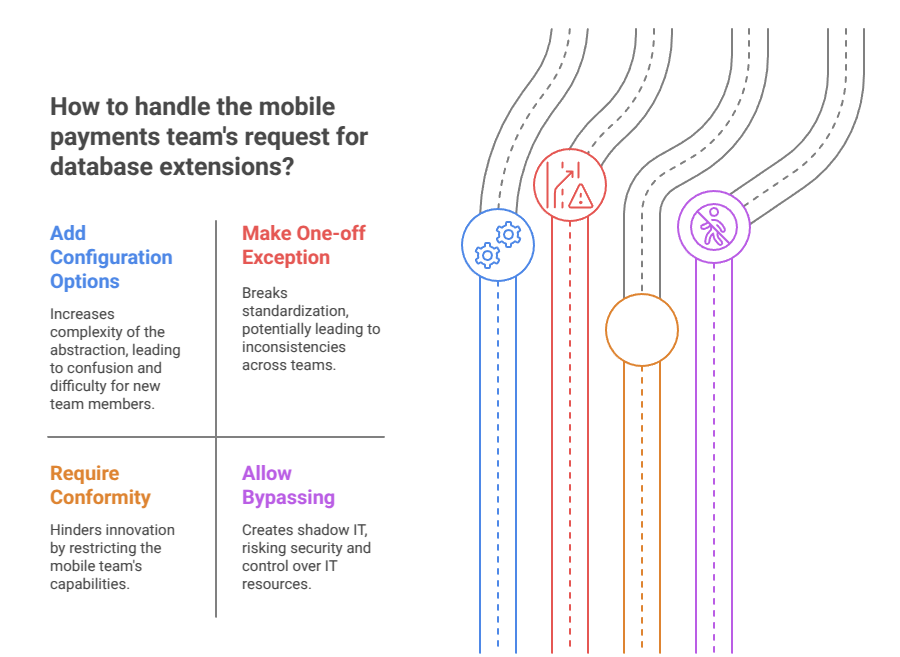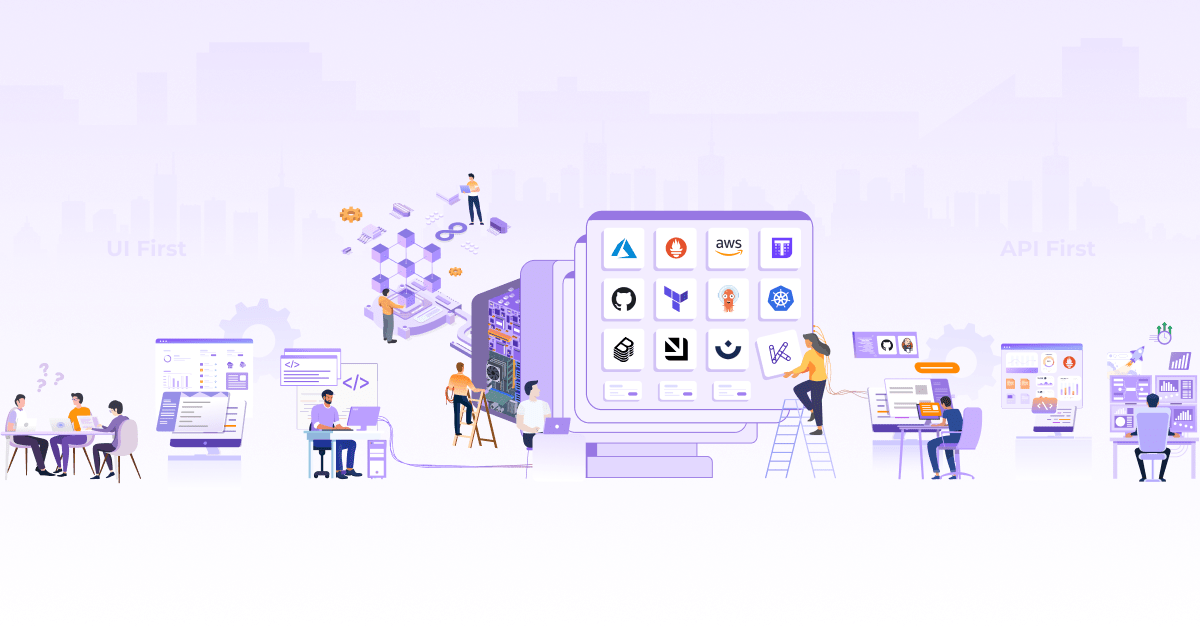
Measuring and Managing Abstraction Debt: Key to Building Flexible Platforms

A few months ago, when the KubeCon London program committee selected my talk for Platform Engineering Day and scheduled it for April 1, I thought it was a prank. It turns out it wasn’t.
As I stood on stage delivering my talk, “Platform Abstractions: An Asset or Liability?” I realized how much the platform engineering space had evolved. At that event, I had the privilege of interacting with our customers and the global platform engineering community, and I observed a shift happening within the platform engineering landscape.
Thanks to these interactions, my focus turned towards the challenges platform teams face when balancing standardization with developer flexibility. Through these observations and my own experiences, I recognized a pattern that inspired my talk’s core concept—”abstraction debt.” In this blog post, I will briefly discuss my presentation and the abstraction trap of developer platforms.
Abstraction Debt in platform engineering
I often explain technical concepts using a food analogy, and this time I used a kitchen analogy, where the platform is like a chef’s kitchen and abstractions are like ingredients in a recipe. Use too many spices, and the dish becomes overwhelmingly complex; use too few, and it’s bland and inflexible. Finding that perfect balance is the art of platform engineering.
But what happens when that balance gets disrupted?
As product requirements evolve and development teams request more features, it becomes increasingly difficult to maintain the rigid abstractions while satisfying everyone’s needs. Developers may need flexibility to develop new features, but the rigidity of the platform does not allow it. Abstraction debt is the cost accumulated from keeping these rigid platform abstractions over time.
Consider this scenario: your platform team has created a database provisioning abstraction that works well for most teams. Then, the mobile team requests a specialized PostgreSQL plugin that is not offered on your platform.
How do you respond?

You could:
- Add the configuration option - making your abstraction more complex.
- Create a one-off exception - break the standardization.
- Reject the request - limit the team’s innovation.
- Let them build their own solution - leads to shadow IT.
Each choice has consequences, and the wrong decision can put you into the abstraction debt cycle: you simplify through abstractions, teams adopt them, new requirements emerge, you add complexity to address these requirements, and the cycle repeats.
How do you know if you’re trapped in Abstraction Debt?
Here are a few warning signs of the Abstraction Debt trap:
- Rising custom requests from development teams
- Teams are building their own workarounds
- Emergence of shadow IT systems
The impact of this debt is substantial. Your platform team spends more time addressing individual needs than implementing new features. Teams lose trust in your platform, evolution slows down, and you struggle to adopt new technologies like AI because you’re buried in maintenance work.

Breaking Free with Abstraction Elasticity
The solution lies in what I call “Abstraction Elasticity” - creating abstractions that behave like rubber bands, capable of stretching to accommodate change without breaking the core functionality of your platform.
To evaluate if your platform has this elasticity, ask these questions:
- Can new requirements be handled without changing core functionality?
- Are there documented extension patterns?
- Do power users have visibility into how the platform works?
- How easy is it for teams to implement custom requirements within the platform?
Implementation Patterns for Elastic Abstractions
Building a platform that is flexible enough to accommodate changes requires making some intentional design choices. The goal isn’t to accommodate every request, but rather to build abstractions that can stretch when needed while maintaining the core functionality.
Let’s explore three specific patterns that can transform rigid abstractions into elastic ones, each addressing different dimensions of flexibility your teams might need.
1. Layered Abstraction Pattern
Create multiple layers of complexity:
- Simple defaults with minimal configuration
- Configurable options for more advanced users
- Escape hatches for power users
For example, a database abstraction might start with just size and high availability options, then offer extensions and backup schedules at the next layer, and finally provide fine-tuning of buffer sizes and connections for advanced users.
2. Progressive Enhancement Pattern
Guide teams from basic to expert approaches:
- Basic API with minimal options (name, image, replicas)
- Enhanced options with resource controls and autoscaling
- Advanced capabilities with security options for platform teams
For example, a deployment API could start with just the application name and container image for beginners, then add resource limits and autoscaling rules for most teams, and finally expose advanced security contexts and service mesh configurations for platform specialists working on critical services.
3. Policy-Based Guardrails
Define policies that enforce standards while allowing flexibility:
- Create environment-specific policies (dev vs. production)
- Implement resource-based policies for different workloads
- Build extension mechanisms for special requirements
For example, implement OPA policies that enforce different rules based on environment type - allowing flexible and multiple extensions in development environments while restricting to approved extensions in production, or automatically enabling backups and high availability for database instances tagged as “critical” while making these optional for non-critical workloads.
Conclusion
Platform engineering is about balancing standardization with flexibility, much like finding the perfect balance of spices in a recipe. By recognizing abstraction debt early and implementing elastic abstractions, platform teams can create systems that truly shift complexity down to the platform instead of leaving it to developers.
If you’re interested in learning more about platform engineering, you can check our comprehensive Platform Engineering eBook that includes reference architectures and real-world implementation strategies.
You can connect with me on LinkedIn or Twitter to discuss this further. And if you’d like to continue the conversation in person, I’d love to welcome you to KubeCon India in Hyderabad this August!
Having built platforms for customers in various domains, we truly understand how to build a platform with the correct mindset, tools, and technologies. Reach out to our platform engineering experts, and let’s explore how we can create a platform that truly serves your goals.
Exploring Platform Engineering? Read the other blogs from our Platform Engineering series:
- DevOps to Platform Engineering: How We Got Here?
- Platform Engineering 101: Get Started with Platforms
- Decoding Workload Specification for Effective Platform Engineering
- Starting Platform Engineering Journey with Backstage
- Mastering Platform Engineering with Kratix
- How to Fail at Platform Engineering?
- Unlocking the Basics of Port
- Port vs Backstage - Choosing Your Internal Developer Portal
Stay updated with latest in AI and Cloud Native tech
We hate 😖 spam as much as you do! You're in a safe company.
Only delivering solid AI & cloud native content.












